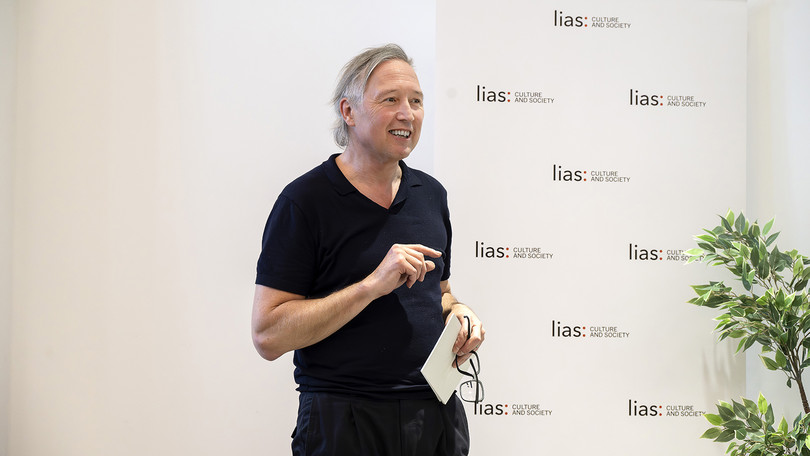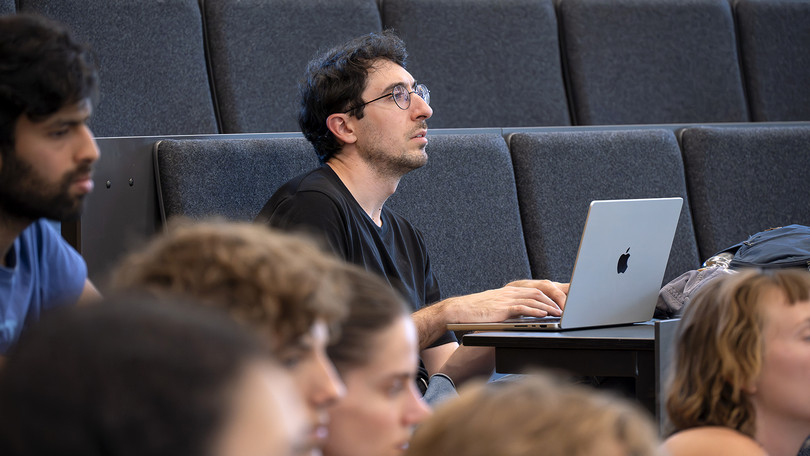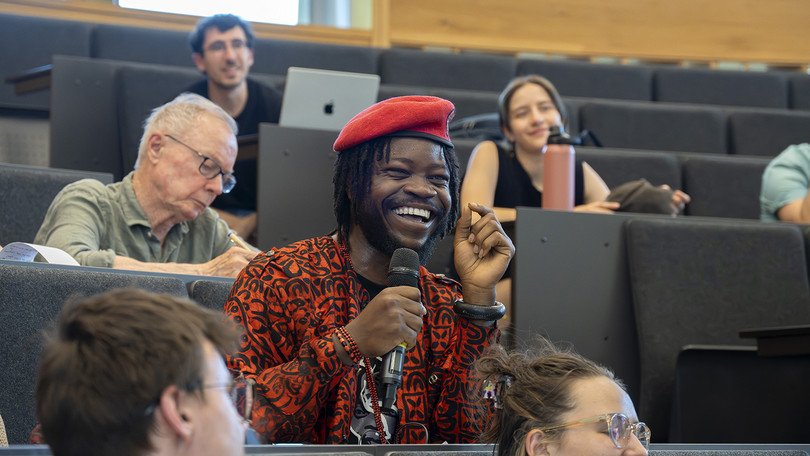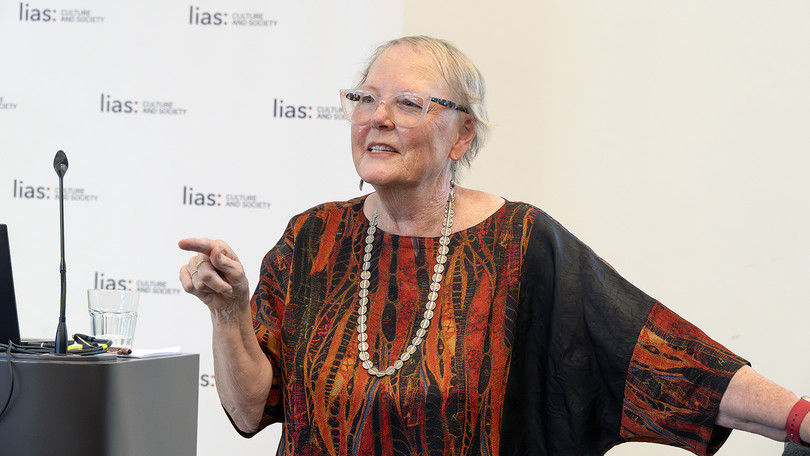Alternatives to capitalism: Reframing, Commoning and Care for economic transformation
LIAS LECTURE Katherine Gibson: »Post-Capitalist Community Here and Now: Sowing the Seeds of Transformative Futures«
2025-07-16
01.07.2025. In her LIAS Lecture, Senior Fellow and LIAS Advisory Board member Katherine Gibson presented a research programme dedicated to the question of how post-capitalist community economies can be conceived and put into practice. As co-founder of the Community Economies Collective, Gibson advocates a radical reconsidering of economic thinking beyond capitalist premises and entrenched linguistic images.
For several decades, her research and projects have focused on assessing and promoting ethically grounded economic well-being in communities around the world. Her work is rooted in a feminist critique of capitalocentrism, the discourse that understands “the economy “as inherently capitalist, thereby erasing other, community-based forms of economic activity. In a world increasingly characterised by exploitation and extractivism, Gibson argues that it is becoming increasingly urgent to make visible alternative ways of living and doing business based on care, mutuality and sharing.
The Australian human geographer emphasised that visibility alone is not enough. For alternative practices to have a transformative effect, they must be theoretically reflected upon and supported by collective action. In this sense, she pointed to the need for a “politics of language” that opens up new subject positions, as well as a practice characterised by anti-essentialism, the acceptance of ambiguity and, not least, joy.
With projects in Australia, Europe, Asia and North America, the Community Economies network shows that alternatives to the capitalist economy have long existed. The group considers it essential to rethink fundamental economic categories such as work, property, production and exchange. At the heart of this is commoning: the collective creation and maintenance of common goods. The responsibility of the community is essential here: commons must remain accessible, maintained and shared fairly. This thinking is strongly influenced by indigenous perspectives, which take into account the impact of today's decisions on future generations – about seven generations ahead. At the same time, awareness of the devastating effects of privatisation and exclusion must be raised.
Gibson used the well-known and striking iceberg metaphor as a starting point. This shows the visible capitalist economy at the tip, while a large part of economic activity (including unpaid care work, barter and self-sufficiency) remains invisible. This metaphor has since been replaced by a floating coconut.
Gibson supplemented her presentation with examples from ongoing research projects, such as the emotional dimension of transformations in Australian coal mining areas and new evaluation models such as Community Economy Return on Investment (CEROI), which measures economic activities according to ethical and community criteria. According to Gibson, projects like these show that it is possible to conceive and realise communal economic activity not only as a vision, but as a concrete alternative.
A classic example of a feminist and public welfare-oriented reorientation of economic thinking is invisible and often unpaid care and domestic work, according to Gibson. These activities are largely ignored in conventional economic measures such as gross domestic product (GDP). In some countries, however, initial steps towards recognising and even remunerating this work are becoming apparent.
Gibson cited food production as another concrete example of the connection between measurement methods (“metrologies”) and the commons. In many regions, subsistence-oriented food production still plays an important role, but it is often overlooked because only the commercial sector is statistically recorded. In cities such as Detroit, urban gardens and community farming are giving rise to new forms of local supply whose contribution to the local economy goes beyond conventional measurement instruments.
Another example is the “Colombes” project in Paris: an urban horticultural and community centre that serves as a model for future green cities. Despite EU funding, the original eco-village was relocated three times to make way for a car park. Nevertheless, a detailed economic assessment (investment: 1.2 million euros; estimated yield: 3.4 million euros) demonstrated the economic benefits that such community-supported eco-projects could generate. This helps to strengthen the case for such projects when arguing with political decision-makers.
Katherine Gibson concludes that work on a public welfare-oriented economy is a global phenomenon. In Asia, for example, cooperative forms of economy are being developed that are based on solidarity and mutual support. In her book The Banker Ladies, Caroline Hossein highlights the important role that black women have played in building solidarity-based financial systems. Indigenous communities also contribute important perspectives based on sustainability, responsibility and the common good.
Overall, rethinking economics in terms of reframing, commoning and care opens up transformative possibilities for more equitable, sustainable and inclusive societies.
In the ensuing discussion, it was emphasised that the emergence of post-capitalist communities is not a linear process, but rather one that moves in "asynchronous" ways. Local initiatives often come into conflict with global market interests or political power relations.
It became clear that the issue today is not to criticise capitalism, but to highlight, strengthen and further develop diverse ways of life and forms of economic activity. In doing so, we must ask ourselves what a just and community-oriented future might look like in concrete terms.






